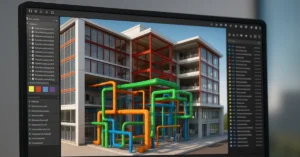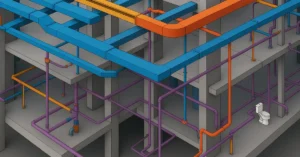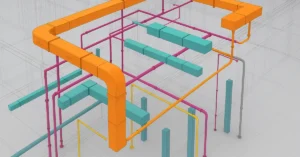Uncovering the Raw Beauty and Bold Vision of Brutalist Buildings in Berlin
Berlin, a city shaped by its turbulent history, is a dynamic canvas for architectural experimentation. Among its architectural gems, Brutalist buildings stand out for their unapologetic aesthetics and raw materials. Often dismissed as cold and uninviting, these structures have now earned a place in the hearts of architecture enthusiasts who see them as bold artistic statements reflecting societal and historical shifts.
This guide to the most iconic Brutalist buildings in Berlin explores how these structures emerged, what they signify, and why they are gaining renewed appreciation today.
What is Brutalism and Why It Found a Home in Berlin
Brutalism, derived from the French term “béton brut” (raw concrete), emerged in the 1950s and 60s as a reaction to the ornate styles of earlier periods. In Berlin, a city deeply scarred by war and shaped by division, Brutalism represented strength, honesty, and utility.
Brutalist architects in Berlin embraced modularity, raw concrete textures, and bold geometric forms. These buildings were not just structures but social statements, created to serve the public and redefine urban spaces. The post-war period and Cold War tension created fertile ground for architectural innovation, and Brutalism’s no-frills approach aligned perfectly with the reconstruction ethos.
A Concrete Tour: Brutalist Buildings in Berlin
1. Corbusierhaus (Unite d’Habitation Berlin)
Location: Flatowallee 16, 14055 Berlin
Architect: Le Corbusier
Year: 1958
Originally envisioned for the 1957 Interbau exhibition, Corbusierhaus is a towering example of high-density living. Though its design was altered to comply with German building codes, it retains many elements of Le Corbusier’s modernist and proto-Brutalist vision. With its modular apartments, pilotis (stilts), and exposed concrete, the structure champions functional, community-focused design.
2. Berliner Philharmonie and Kammermusiksaal
Location: Herbert-von-Karajan-Straße 1, 10785 Berlin
Architect: Hans Scharoun
Year: 1963
While not typically classified as Brutalist in a conventional sense, the Philharmonie shares many traits with the movement—raw materials, expressive shapes, and emphasis on structure over decoration. Its bold, tent-like form and irregular concrete facade make it a spiritual cousin of the Brutalist ethos. The adjacent Kammermusiksaal complements the structure, offering an architectural harmony that thrives on contrast.
3. Haus der Kulturen der Welt (House of World Cultures)
Location: John-Foster-Dulles-Allee 10, 10557 Berlin
Architect: Hugh Stubbins
Year: 1957
Though built in the modernist era, this structure’s dramatic cantilevered roof and exposed concrete surfaces echo Brutalist sensibilities. Originally named the “Kongresshalle,” the building was a gift from the United States to West Berlin and now serves as a cultural institution. Its raw elegance and sweeping curves are hallmarks of post-war optimism and architectural daring.
4. Institute for Hygiene and Microbiology, FU Berlin
Location: Garystr. 21, 14195 Berlin
Architect: Hermann Fehling and Daniel Gogel
Year: 1969
This lesser-known gem at the Free University of Berlin stands as a Brutalist powerhouse. With its massive concrete slabs, sculptural staircases, and fortress-like demeanor, it creates an intense academic atmosphere. It’s a perfect embodiment of Berlin’s love affair with raw, uncompromising design.
5. Church of Maria Regina Martyrum
Location: Heckerdamm 230, 13627 Berlin
Architects: Hans Schilling and Friedrich Ebert
Year: 1963
Built to commemorate Catholic martyrs of the Nazi regime, this church is somber and monumental. The exterior is stark and minimal, while the interior uses light and form to create spiritual resonance. This duality of severity and serenity is central to the Brutalist style.
6. The Czech Embassy
Location: Wilhelmstraße 44, 10117 Berlin
Architect: Václav Aulický and Vera Machoninová
Year: 1978
The Czech Embassy is one of Berlin’s boldest Brutalist statements. With its massive, blocky concrete facade and rigid window configurations, it symbolizes Cold War strength and bureaucratic might. Designed by Czech architects, it reflects the austere style common in Eastern Bloc public buildings.
7. Ku’Damm Eck (Original)
Location: Kurfürstendamm, Berlin
Architect: Werner Düttmann
Year: 1973 (demolished 1999)
Though it no longer stands, the original Ku’Damm Eck was a key example of Berlin’s Brutalist commercial architecture. Its demolition sparked debates on the value of preserving Brutalist heritage. This moment became a rallying cry for local architecture advocates, pushing the Brutalism preservation movement forward.
Why Brutalist Buildings Matter in Berlin Today
Brutalist buildings in Berlin are more than concrete giants; they are historical markers. They tell stories of resilience, division, and reconstruction. Their designs echo the city’s once-fractured identity, revealing the hopes and challenges of their time.
Despite their controversy, these buildings continue to serve public, residential, and cultural purposes. Their solid forms resist gentrification, and their unapologetic aesthetic stands as a defiance against fleeting design trends.
Brutalism in a New Light: The Rebirth of Concrete Culture
In recent years, Berlin has seen a revival in appreciation for Brutalist architecture. Tours are now organized to showcase these concrete giants. Artists, designers, and photographers are finding inspiration in their dramatic lines and shadow play.
Social media has also contributed to the renaissance. Platforms like Instagram and Pinterest are filled with moody, high-contrast shots of Brutalist structures, helping a new generation connect with this once-maligned style. Berlin, always a trendsetter in design, is now positioning Brutalism as a retro-futurist style worth preserving.
Final Thoughts
Brutalist buildings in Berlin are more than just architectural oddities—they are expressions of identity, resilience, and innovation. Though often criticized for their raw appearance, they embody a profound architectural language that speaks to Berlin’s unique socio-political past.
Whether you’re walking through the stark halls of the Czech Embassy or admiring the modular genius of Corbusierhaus, each building invites you to look past the concrete and into the soul of a city that has reinvented itself time and time again.
If you’re planning a trip to Berlin or simply want to explore the evolution of architecture, make sure to include these Brutalist marvels on your itinerary. They might just change the way you view the built environment forever.
If you’re interested in learning more about architecture firms in Europe, check out this comprehensive list of the top 50 firms compiled by Archgyan. From innovative startups to long-established industry leaders, this list has it all. Take a look and discover some of the most inspiring and influential architecture firms in Europe today.
If you’re interested in architecture and want to learn more about this amazing field, subscribe to our podcast on youtube
For more SketchUp tutorials, head to https://www.sketchupguru.com










